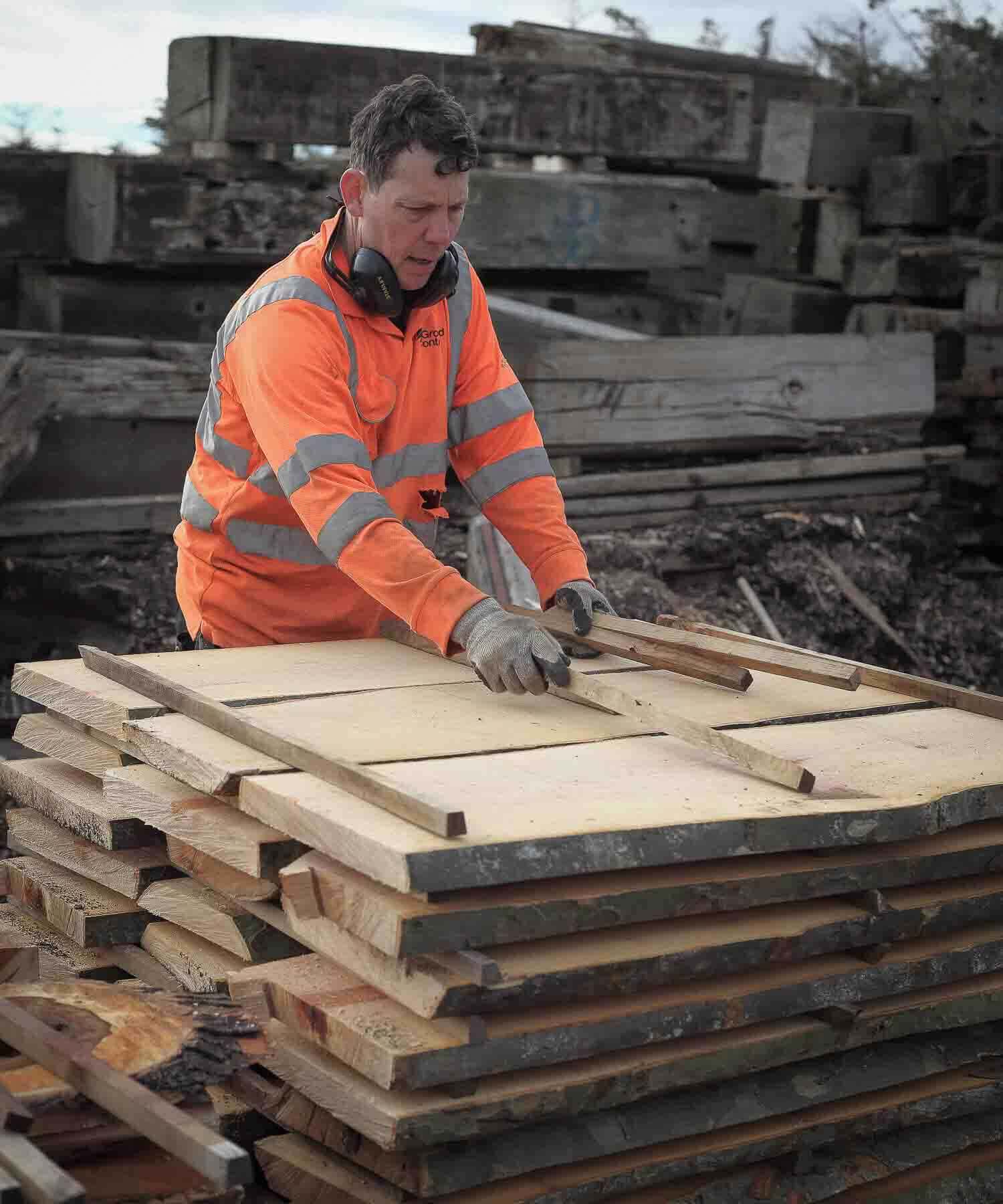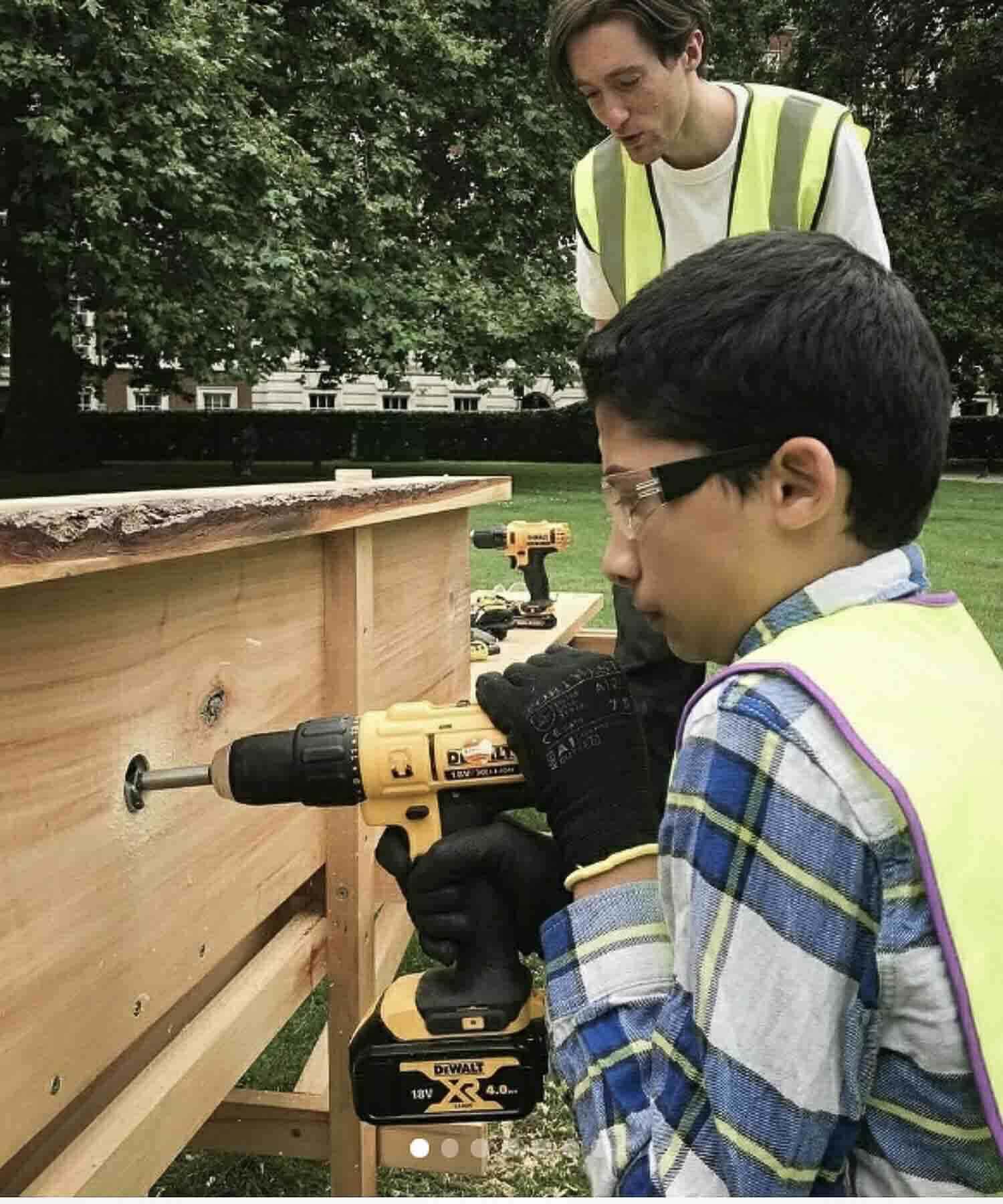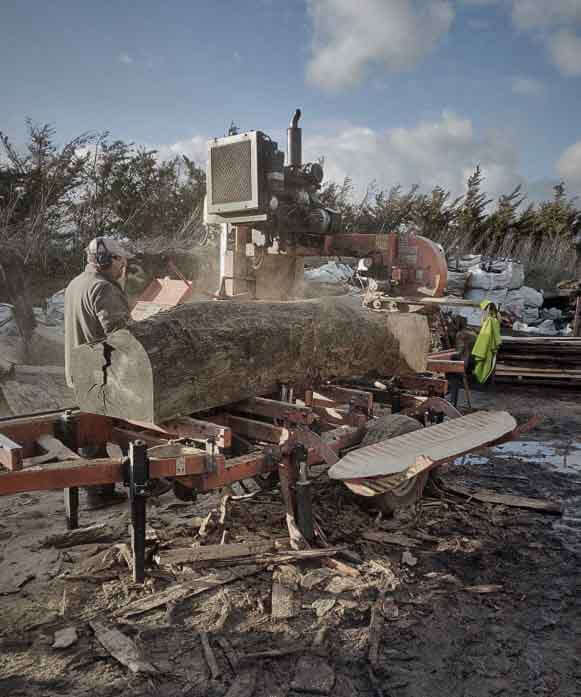About our carbon calculations
We’ve made a few simplifying assumptions to keep our carbon footprint calculations practical, and we’ve outlined these below to share our learning and invite discussion.
Timber usage
We assume that our timber will be used for the long term, as quality furniture tends to stay in homes for decades, if not generations. While we can’t fully control this, we’re confident that most of our timber will stay out of the waste stream. Currently, we estimate that 5–10% may be discarded within 10 years, releasing carbon back into the atmosphere. To address this, we’re developing a take-back scheme, allowing customers to return unwanted timber or furniture to us for reuse.
Company and product calculations
Our calculations include emissions across Scopes 1, 2, and 3. 'Product emissions' focus on those involved in producing raw timber, while 'company emissions' add in furniture production and delivery emissions, providing a complete picture of our environmental impact.
We’ve structured our assessment around lifecycle stages A1–A4 for a 'cradle-to-gate' analysis, covering all emissions up to when timber leaves our site. We’re planning to use this groundwork to create an Environmental Product Declaration (EPD) for our timber in the future.
The notes below relate to our detailed calculations which we would be happy to share. Just email hello@ fallenandfelled.co.uk
Emissions by category
Emissions = -181 tCO2e/yr
Last year we saved 120 trees. These were trees that had died, become a danger, or needed to be removed to make way for development. They were felled by tree surgeons who - if we were not involved - would have chipped them and sent them to biomass power stations or for use as firewood. We take the trunks and main stem ‘logs’ only.
We've assumed that all the logs we took would otherwise have been burned, and their carbon emitted into the atmosphere. There are no official statistics confirming this, but it's common knowledge in the tree community that this happens in practically all cases in and around London.
We've chosen not to include carbon emissions resulting from work by tree surgeons to remove these trees. This is because the trees would have been felled – and the emissions occurred – whether we took the logs or not. We only ever take logs from trees which others have chosen to remove.
We source ash and oak logs from outside London, much of it from woodland thinnings. In most cases, the carbon in these trees would otherwise be rapidly lost either through burning or their short-term use outdoors as fencing. We've included these species in our analysis.
Emissions = 23 tCO2e/yr (40% of positive emissions)
After milling, we estimate that in 2023 we created 142m3 of wood available for sale. We generated 21m3 of this amount additionally as waste wood - trimmings, bark and sawdust.
Our waste levels are relatively small in comparison to larger timber processors, and we have not yet been able to identify a partner to take this green timber waste. As a result, the waste is disposed of and its embodied carbon lost.
A similar quantity of higher quality waste wood is sold to a number of customers who use it to make sustainable products. We assume that the carbon is retained in these case because their products are long-lived. This amount is included in the 181 tCO2e/yr figure in 'Sourcing Timber'
Emissions = 3 tCO2e/yr (5% of positive emissions)
We hire lorries and trucks to transport logs to our timber yard in Bulphan, Essex. These vehicles use diesel which has a high environmental impact, although the distances travelled to source timber in and around London are relatively low. Increasingly, we source trees from local tree surgeons’ yards which enables us to take multiple logs per load, increasing efficiency.
Transport emissions also include 50% of the usage of our electric van which is used for lighter loads and moving timber between our Essex and Walthamstow sites.
Emissions = 8 tCO2e/yr (14% of positive emissions)
Transforming logs into timber boards requires electricity to run our mill, and diesel to power our forklift and our contractor’s (diesel-operated) mill. Over 80% of these emissions are from diesel consumption.
Emissions = 8 tCO2e/yr (14% of positive emissions)
Air drying timber is largely emissions-free since no energy is used in the process; only time and space are required. The greatest emissions are from electricity used to run our kilns which operate day and night and are used for a week or two at the final stage of the seasoning process. Running at around 60° C, these reduce the moisture content of air-dried timber down to furniture-grade level.
Our production processes require the purchase of equipment and consumption of consumables. The highest emissions in 2013 resulted from the purchase of our timber mill and steel used for racking and storage. Consumables include packaging, tools and waste disposal.
Emissions = 3 tCO2e/yr (4% of positive emissions)
Staff commuting and business travel emissions are included in our overall company emissions. Beyond staff costs, we've not included Scope 3 emissions which are largely outside of our control – e.g. how our timber is used and maintained; how it's turned into products and furniture by our trade customers; and the emissions resulting from things like the purchase of office equipment.
Emissions = 0.5 tCO2e/yr (1% of positive emissions)
Furniture making comprises around 30% of our business sales. It spans machining boards for sale, through to creating finished furniture. Emissions mostly include electricity required to run tools, and workshop heating and lighting. Since we hire space at Blackhorse Workshop and pay a standard monthly charge, we've only been able to calculate these costs based on estimated energy usage.
The emissions are low at just 1% of the company’s figure. These emissions are included in our overall company footprint for 2013, but not in the calculation of our product emissions per m3 timber produced.
Emissions = 4 tCO2e/yr (7% of positive emissions)
We use a variety of transport methods to delivery timber and furniture. Approximately half of all orders are collected by customers themselves. We've estimated emissions for our own van usage and pallet shipping but have not included deliveries by couriers such as UPS.
Delivery emissions (without couriers) account for 7% of our emissions – included in our company footprint but not in our timber product emissions. Packaging costs are negligible at 0.2 tCO2e/yr.


